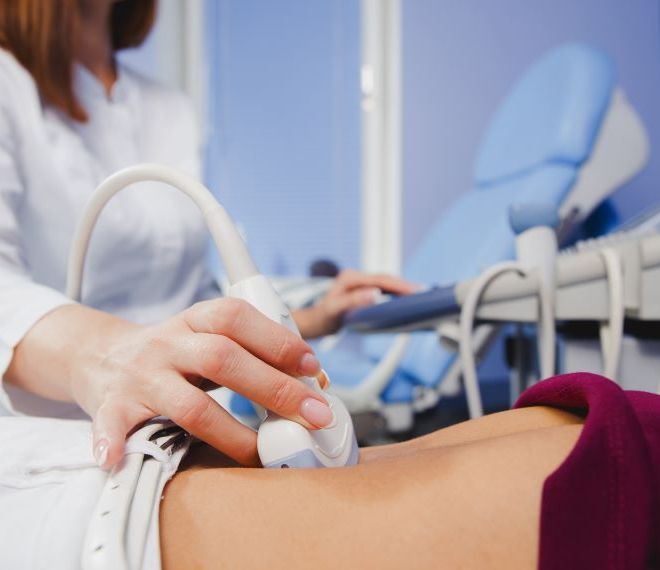Abdominal and pelvic ultrasound examination

How is the examination conducted?
The abdominal and pelvic ultrasound examination is usually performed while lying on your back, using a special probe and a water-soluble contact gel applied to the area to be examined. During the examination, it is important to lie still and follow the doctor's instructions. Sometimes, you may be asked to turn to one side to better assess certain organs. At the end of the examination, the gel can be easily wiped off and leaves no residue.
Which age groups is it recommended for and how often should it be done?
The examination is suitable for all age groups and can be performed on anyone, including pregnant women. Its main advantages are that it is quick, easily accessible, provides high-resolution detailed images, and does not use ionizing radiation. For screening purposes, it is recommended every 1-2 years depending on the general condition. In case of symptoms, it can be done based on the nature of the complaint.
Which organs can be examined with an abdominal ultrasound?
During the examination, the abdominal organs and soft tissues (liver, gallbladder, bile ducts, pancreas, spleen, kidneys, bladder), as well as lymph nodes, can be visualized.
When is it advisable to perform the examination?
It is usually the primary imaging method in cases of abdominal discomfort, lower abdominal cramps, or unknown origin of abdominal complaints. It can be performed based on a thorough physical examination by the clinician, detailed medical history, and laboratory tests. At this stage, the examining doctor usually already has a preliminary diagnosis. A high-resolution abdominal ultrasound examination can rule out many diseases, but if the preparation is not adequate, no results may be obtained as some abdominal and pelvic organs cannot be properly assessed (e.g., in the case of an empty bladder, the condition of the pelvis and bladder cannot be evaluated).
What should I do before an abdominal ultrasound examination?
At Duna Medical Center, you do not need to bring an official referral, but it is recommended that the referring doctor writes down the background and clinical questions that prompted the request for an abdominal and pelvic ultrasound examination.
- Collect previous medical records from other institutions (CDs, films, ultrasound-CT-MRI reports, laboratory results, surgical/histological findings related to the examined area).
- On the day of the examination, arrive on an empty stomach, but you may drink still water or plain tea. Avoid coffee and chewing gum as they cause the gallbladder to contract, thickening its wall, making it difficult to assess both the wall and its contents.
- Avoid consuming legumes and gas-producing foods (e.g., cabbage, Brussels sprouts, kohlrabi, cauliflower) the day before the examination.
- The bladder needs to be full for the examination, which helps to better evaluate the pelvic organs (male and female reproductive organs). A full bladder acts as an acoustic window, aiding the propagation of ultrasound beams.
- Allow at least 48 hours between gastroenterological procedures (gastroscopy, colonoscopy) and the abdominal/pelvic ultrasound examination.
Does it take a long time?
The examination usually takes 20-30 minutes, is painless, free of ionizing radiation, and has no complications.
When will I receive the report?
The written report will be sent to our patients via email within 2-3 working days after the examination.
Book an appointment or view our services!
